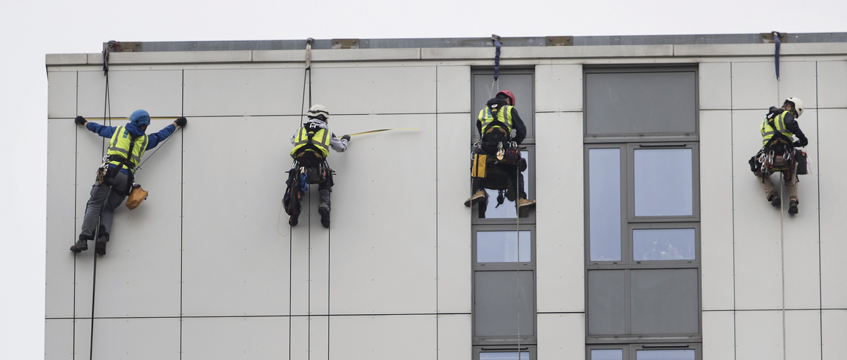Elizabeth Dwomoh offers an important update on interpreting the expression “cladding system” under the Building Safety Act 2022, following an Upper Tribunal appeal decision on service charge liability.
Key points
- It is the role of the First-tier Tribunal to determine in every case, where relevant, whether the leaseholder provisions in the Building Safety Act 2022 apply
- The expression “cladding system” should not be construed narrowly
Following the tragedy of the Grenfell Tower fire on 14 June 2017, the Building Safety Act 2022 was enacted to improve the safety and standard of all buildings. The Act, however, also offers new rights and remedies to leaseholders in respect of relevant buildings that are more than 11m in height or more than five storeys.
In Lehner v Lant Street Management Ltd [2004] UKUT 0135 (LC); [2024] PLSCS 103, the Upper Tribunal (Lands Chamber) was asked to consider whether works carried out in respect of a block could be classed as “cladding remediation” under paragraph 8 of schedule 8, so as to absolve a lessee, under a qualifying lease, of having to pay service charges in respect of its removal.
The statutory provisions
Leaseholders under “qualifying leases”, as defined in section 119(2), were by virtue of section 122 and schedule 8 of the 2022 Act protected from the liability to pay some or all of the service charges that would otherwise be due as their contribution towards costs connected with “relevant defects”.
Under paragraph 8 of schedule 8, a qualifying lessee was not required to pay service charges in respect of “cladding remediation”. This meant works relating to the removal or replacement of any part of a cladding system that formed the outer wall of an external wall system and was unsafe.
The facts
Markus Lehner was the long leaseholder of a flat in a development of three blocks of flats at 4 Sanctuary Street, London, SE1. Lant Street Management Company Ltd was Lehner’s intermediate landlord.
Lehner’s flat was situated in a five-storey block, part of which had been finished with cladding. In February 2018, LSMC commissioned a fire risk assessment report, which assessed the block as being a low fire risk. In October 2019, a further report was commissioned by LSMC, which recommended that the cladding and balconies be inspected by specialist contractors. A report obtained in light of that recommendation advised that the insulation behind the vertical cladding panels on the exterior of the block be replaced. It was further advised that vertical cavity barriers be added between each flat.
Following statutory consultation and tender for the works, leaseholders were notified that the total cost of the works would be £211,119. On 8 February 2021, Lehner received a service charge demand in the sum of £1,244.85 as his contribution. Included in the demand was a statement for the purposes of sections 47 and 48 of the Landlord and Tenant Act 1987 that a third party company, Damgate Freeholds Ltd, was his landlord.
Lehner applied to the First-tier Tribunal for a determination of his liability to contribute towards of the proposed works pursuant to section 27A of the Landlord and Tenant Act 1985.
The FTT decision
The FTT determined that Lehner was liable to pay the service charge contribution in the sum demanded for the proposed works.
The FTT found that works that formed the basis of the disputed service charge did not involve the “removal or replacement” of any part of the cladding system. Rather, the works involved the replacement of the insulation and the addition of a cavity barrier. The cladding system was not itself unsafe. Lehner appealed.
The appeal
During the course of the appeal, fresh evidence was permitted that established that, at the date the service charge demand was given to Lehner, LSMC and not Damgate was his landlord.
Accordingly, section 47(1) of the 1987 Act, which required that a demand served on a tenant must include the name and address of the landlord, had not been complied with. Consequently, under section 47(2) of the 1987 Act, no service charge was payable in respect of the works giving rise to the disputed demand until such time as a compliant demand containing the correct name and address of his landlord was given.
The UT went on to consider the applicability of the 2022 Act to the facts of the case. Due to the complexity of the statutory provisions under the 2022 Act, the UT formulated a series of questions it suggested a decision maker should address when determining the payability of service charges in respect of works to which the leaseholder protection may apply.
On the facts of the present case, the UT observed that the FTT was wrong to find that the protection under paragraph 8 of schedule 8 was not engaged.
The UT had adopted an overly narrow interpretation of the expression “cladding system”, which the 2022 Act did not define. Relying on guidance from the RICS and the British Standards Institution code of practice, the UT found that the ordinary meaning of “cladding system” included material installed behind the external screen.
The works forming the disputed demand required the removal of the original sheets of insulation and their replacement with different materials with improved fire-resistant properties. These new components did amount to the removal and replacement of the cladding system.
The takeaway
The UT observed that it was the role of the FTT to determine in every case whether the leaseholder provisions in the 2022 Act applied, particularly so when parties were unrepresented.
Elizabeth Dwomoh is a barrister at Lamb Chambers









